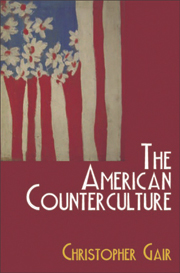7 - Painting
from Part Two - 1961–1972
Published online by Cambridge University Press: 05 August 2013
Summary
‘Don't mourn for me, organise!’
Joe Hill's last words before execution by firing squad (19 November 1915)Perhaps the epitome of the alternative communal site was Andy Warhol's Factory, a loft he began renting in November 1963 to use as a studio for painting and shooting films. The Factory became a place where some Village people actually lived … but where many more went simply to hang out – to do drugs, listen to music, have sex, talk, and meet people. By the late Sixties it was famous as a fashionable scene. The Factory was both site and symbol of the alternative culture's disdain for the bourgeois ethic, from work to sex to control of consciousness – a sanctified space where leisure and pleasure reigned.
Sally Banes, Greenwich Village 1963 (1993)In my discussion of Abstract Expressionism, I highlighted tensions inherent in the relationship between the New York avant-garde and the counterculture of the 1950s. On the one hand, it is evident that there are clear formal similarities between Action Painting, jazz and Beat writing in the emphasis on ‘spontaneity’ and in the creation of works that challenged traditional notions of artistic representation. On the other, the ease with which the paintings of Jackson Pollock and many other artists were incorporated and deployed by governmental and private institutions keen to highlight American exceptionalism within the climate of the Cold War is indicative of the limited challenge posed to political – if not artistic – orthodoxy by Abstract Expressionism.
- Type
- Chapter
- Information
- The American Counterculture , pp. 182 - 200Publisher: Edinburgh University PressPrint publication year: 2007



